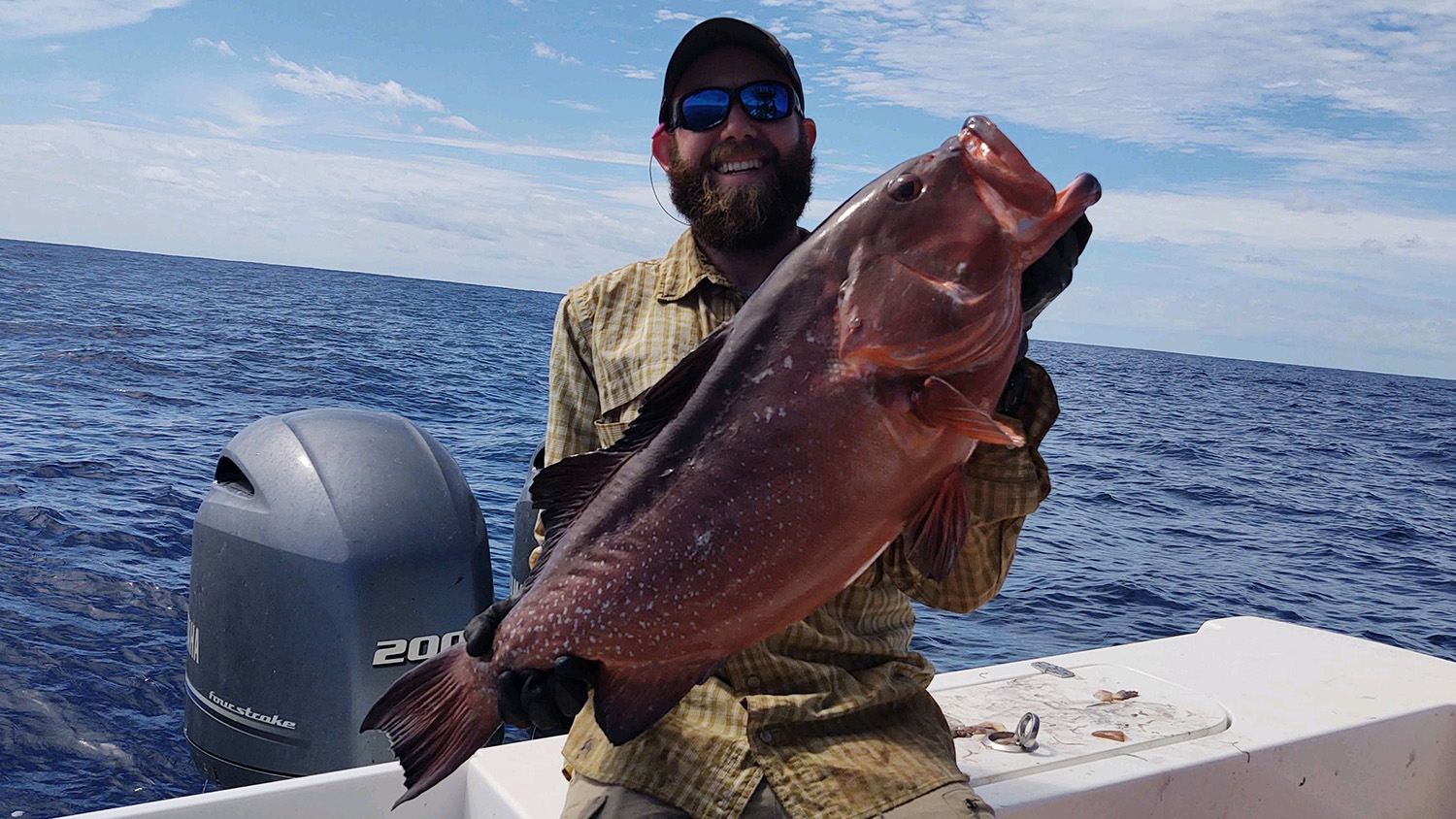Study Finds Some Sport Fish Are Caught Repeatedly – Which Could Throw Off Population Estimates

For Immediate Release
A new study reports that, for several species of oceanic sport fish, individual fish that are caught, released and recaught are more likely to be caught again than scientists anticipated. The findings raise some interesting questions for policy makers tasked with preserving sustainable fisheries.
The study makes use of data from tagging programs, in which researchers tag fish and release them into the wild. When those fish are caught, and the tag information is returned to the researchers, it can give scientists information that informs fishery policies.
“Fisheries researchers who work in tagging programs have long noticed that certain fish seem to get caught repeatedly, and we set out to determine the implications of this phenomenon,” says Jeff Buckel, co-author of the study and a professor of applied ecology at North Carolina State University.
To that end, researchers examined decades’ worth of Atlantic coast tagging datasets on four fish species: black sea bass (Centropristis striata), gray triggerfish (Balistes capriscus), red grouper (Epinephelus morio), and Warsaw grouper (Hyporthodus nigritus). Using a computational model, the researchers determined that – for the black sea bass and both types of grouper – survival was significantly higher after the second, third, and fourth release as compared to the first release.
“Think of it this way,” says Brendan Runde, first author of the study and a Ph.D. student at NC State. “Let’s say you tagged 1,000 fish and recaptured 100 of them for a first time. After re-releasing those 100 fish, you would only expect to recapture 10 of them a second time. But that’s not what we’re seeing. We’re seeing much higher numbers of fish getting recaptured after the second time.
“Our hypothesis is that this increase in catch rate stems from selection for robust individuals,” Runde says.
In other words, because some fish don’t survive the first release, and you can’t catch a dead fish, the fish that were robust enough to survive their first encounter were more likely to survive following catch-and-release events.
The finding could have a significant impact on stock assessments, which inform fishery policies.
“One might assume that every catch and release in a recreational fishery is a unique fish,” Buckel says. “So that if 5 million black sea bass were caught and released in a given year, that would mean there were at least 5 million black sea bass in a fishery. For these three species of fish and likely many others, that’s just not true. At least some of those 5 million catches were the same fish getting caught over and over again.”
“Reliable estimates of how many unique fish are released are critical to accurately assessing the health of the population,” says Kyle Shertzer, a co-author of the study and stock assessment scientist at NOAA Fisheries.
“On the positive side, the study also suggests that for many species fish mortality from being released appears lower than we thought,” Buckel says. “For those species, if a fish survives its first release, it has an even better chance of surviving subsequent releases.”
“We think that the issues raised by our findings are likely relevant for many marine fish stock assessments that rely on catch-and-release data – though this will vary based on the species and the details of how each stock assessment is performed,” Runde says.
The paper, “Repetitive capture of marine fishes: implications for estimating number and mortality of releases,” is published in the ICES Journal of Marine Science. The paper was co-authored by Paul Rudershausen, a research scholar in NC State’s Department of Applied Ecology; Nate Bacheler of NOAA Fisheries; and Beverly Sauls of the Florida Fish and Wildlife Research Institute.
The work was done with support from NOAA, under grants NA14NMF4540061, NA09NMF4720265 and NA09NMF4540140; and from North Carolina Sea Grant Fishery Resource Grant projects 07-FEG-01 and 11-FEG-04.
-shipman-
Note to Editors: The study abstract follows.
“Repetitive capture of marine fishes: implications for estimating number and mortality of releases”
Authors: Brendan Runde, Jeff Buckel and Paul Rudershausen, North Carolina State University; Kyle Shertzer and Nate Bacheler, NOAA Fisheries; and Beverly Sauls, Florida Fish and Wildlife Research Institute
Published: Nov. 12, ICES Journal of Marine Science
DOI: 10.1093/icesjms/fsaa166
Abstract: In some fisheries, releases are a high percentage of total catch. Recent tagging data of marine fishes have revealed that recapture of the same individual multiple times occurs frequently. We investigated the magnitude of this phenomenon and its effect on survival using previously collected mark-recapture data of four reef-associated species. We used Cox proportional hazard regression models to examine whether survival varied with release number. For three of four species, survival was significantly higher after the second, third, and/or fourth release as compared to the first release, perhaps resulting from selection for robust individuals. Repetitive recapture implies that the estimated number of unique released fish is biased. Increased survival following later releases as compared to the initial release suggests that the number of dead discards may be similarly overestimated. We analyzed sensitivity of stock assessment results to reduced estimates of dead discards using two of our species that had recently been assessed. We found that reduced estimates of dead discards had a modest effect on assessment results, but could nonetheless affect the perception of fishery status. Our findings highlight the need to revise current practices for estimating live and dead discards, either internal or external to stock assessment models.


